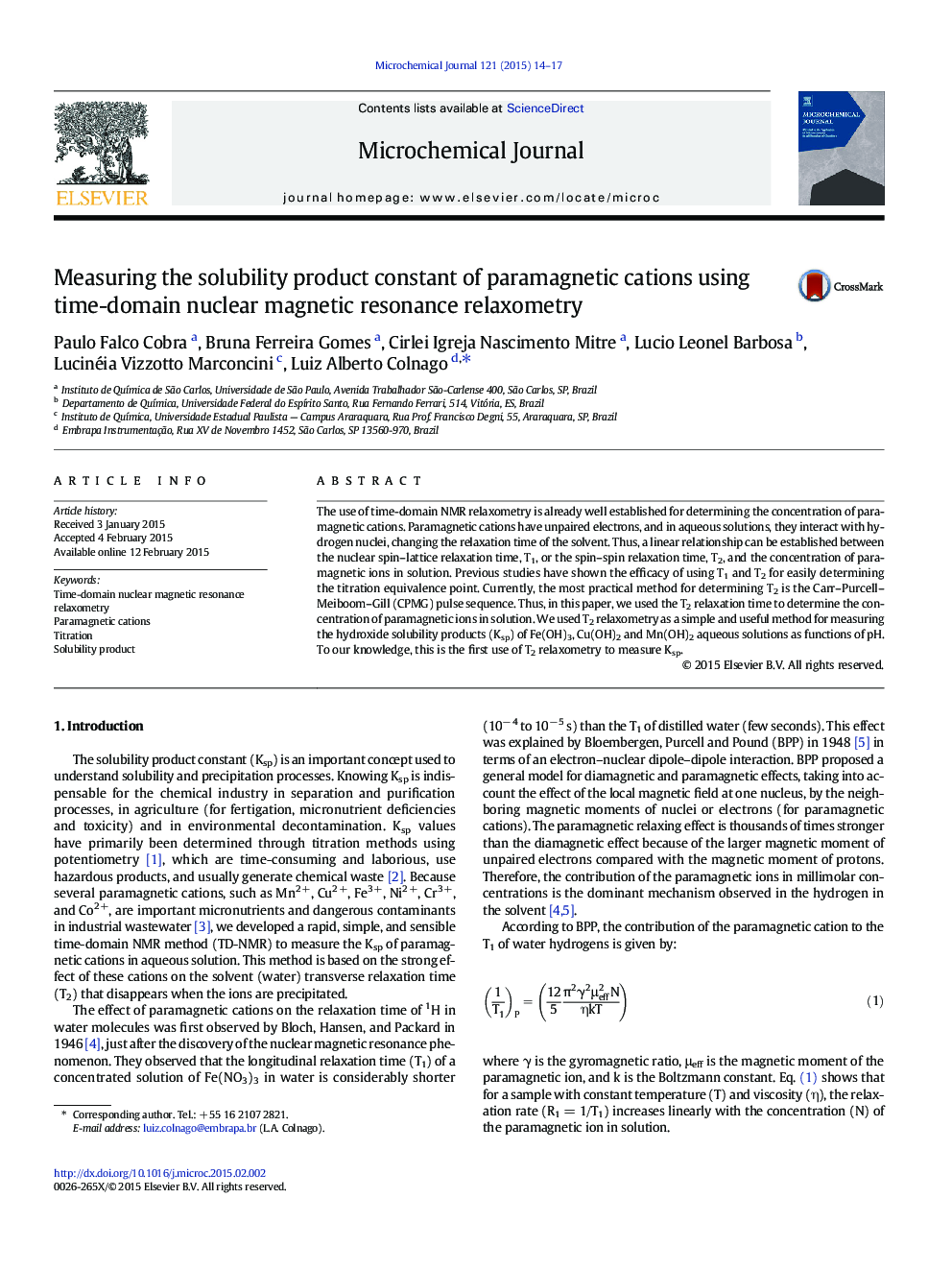| Article ID | Journal | Published Year | Pages | File Type |
|---|---|---|---|---|
| 1227676 | Microchemical Journal | 2015 | 4 Pages |
•Simple and rapid time-domain NMR method for measuring solubility product constant of paramagnetic cations•The method has several advantages over several traditional electrochemical and spectroscopic methods.•The method does not require chemical indicators, ion-selective electrodes, support electrolytes and colored components.•The analysis is performed in a standard bench top time-domain NMR spectrometer.
The use of time-domain NMR relaxometry is already well established for determining the concentration of paramagnetic cations. Paramagnetic cations have unpaired electrons, and in aqueous solutions, they interact with hydrogen nuclei, changing the relaxation time of the solvent. Thus, a linear relationship can be established between the nuclear spin–lattice relaxation time, T1, or the spin–spin relaxation time, T2, and the concentration of paramagnetic ions in solution. Previous studies have shown the efficacy of using T1 and T2 for easily determining the titration equivalence point. Currently, the most practical method for determining T2 is the Carr–Purcell–Meiboom–Gill (CPMG) pulse sequence. Thus, in this paper, we used the T2 relaxation time to determine the concentration of paramagnetic ions in solution. We used T2 relaxometry as a simple and useful method for measuring the hydroxide solubility products (Ksp) of Fe(OH)3, Cu(OH)2 and Mn(OH)2 aqueous solutions as functions of pH. To our knowledge, this is the first use of T2 relaxometry to measure Ksp.
